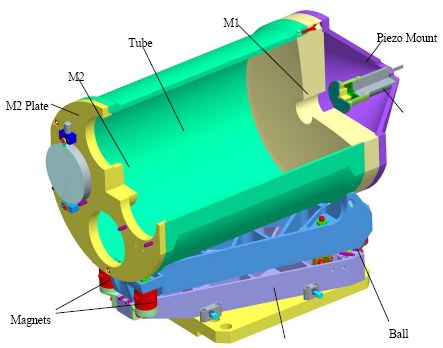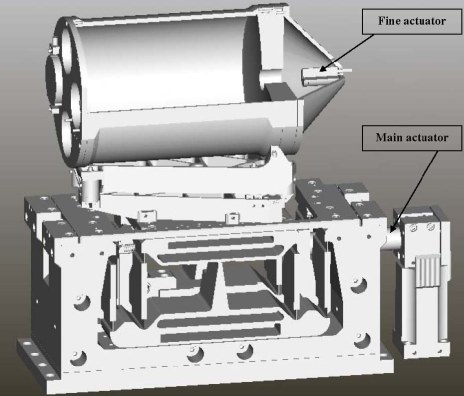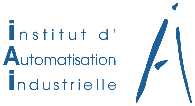The DDL cat's eye was designed and procured by the Max-Plank Institute for Astronony of Heidelberg.
The DDL cat’s eye telescope assembly is shown in the figure below.
It consists of the following main components:
- Primary mirror M1 with a central hole and an extension on the back side for the M3 unit.
- Secondary mirror M2: The unit consists of a round plate with the same diameter as M1 (200 mm), four holes of equal size for astronomy and internal metrology beams (in and out), and the actual mirror surface polished on the inner side of the central thicker part of the plate.
- M3 unit, which consists of the piezo positioner (PI S-325), an interface plate on the back side for mounting on M1, and the actual M3 mirror mounted on the front side.
- Tube, on which M1 and M2 are mounted.
- Mount, which is the support structure that holds the tube on top and will be mounted kinematically on the translation table (part of the main translation stage).

Mirrors, tube, and mount are made from DISPAL-C13 (aluminum alloy). All parts can be screwed together directly.
The mechanical translation assembly subsystem is made of:
- A main translation stage which will provide the long stroke with adequate coarse accuracy. The DDL translation stage was procured by company Mecartex under contract by the Observatory of Geneva.
- A piezoelectric high precision moving actuator located on the mirror M3 provides the fine motion of the DDL. Moreover, this high precision actuator will execute a static compensation (lookup table) of the Tilt/Tip error introduced by the mechanical stage during the translation in order to answer the requirements.




